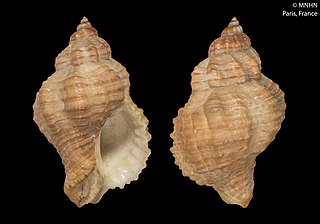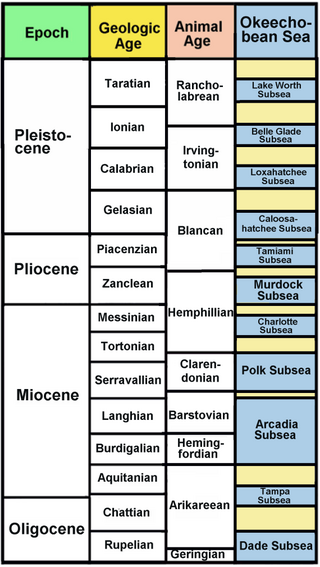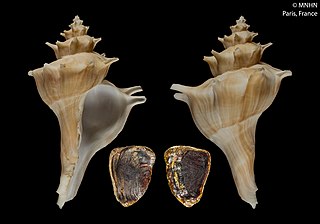
Barn-owls are one of the two families of owls, the other being the true owls or typical owls, Strigidae. They are medium to large owls with large heads and characteristic heart-shaped faces. They have long, strong legs with powerful talons. They also differ from the Strigidae in structural details relating in particular to the sternum and feet.

The Anatidae are the biological family of water birds that includes ducks, geese, and swans. The family has a cosmopolitan distribution, occurring on all the world's continents except Antarctica. These birds are adapted for swimming, floating on the water surface, and, in some cases, diving in at least shallow water. The family contains around 174 species in 43 genera.

Rails are a large, cosmopolitan family of small- to medium-sized terrestrial and/or semi-amphibious birds. The family exhibits considerable diversity in its forms, and includes such ubiquitous species as the crakes, coots, and gallinule; other rail species are extremely rare or endangered. Many are associated with wetland habitats, some being semi-aquatic like waterfowl, but many more are wading birds or shorebirds. The ideal rail habitats are marsh areas, including rice paddies, and flooded fields or open forest. They are especially fond of dense vegetation for nesting. The rail family is found in every terrestrial habitat with the exception of dry desert, polar or freezing regions, and alpine areas. Members of Rallidae occur on every continent except Antarctica. Numerous unique island species are known.

Podocnemididae is a family of pleurodire (side-necked) turtles, once widely distributed. Most of its 41 genera and 57 species are now extinct. Seven of its eight surviving species are native to South America: the genus Peltocephalus, with two species, only one of which is extant ; and the genus Podocnemis, with six living species of South American side-necked river turtles and four extinct. There is also one genus native to Madagascar: Erymnochelys, the Madagascan big-headed turtle, whose single species E. madagascariensis.

The Lacertidae are the family of the wall lizards, true lizards, or sometimes simply lacertas, which are native to Afro-Eurasia. It is a diverse family with at about 360 species in 39 genera. They represent the dominant group of reptiles found in Europe.

Nothofagus, also known as the southern beeches, is a genus of 43 species of trees and shrubs native to the Southern Hemisphere in southern South America and east and southeast Australia, New Zealand, New Guinea, and New Caledonia. The species are ecological dominants in many temperate forests in these regions. Some species are reportedly naturalised in Germany and Great Britain. The genus has a rich fossil record of leaves, cupules, and pollen, with fossils extending into the late Cretaceous period and occurring in Australia, New Zealand, Antarctica, and South America.

Ecphora gardnerae is a species of extinct predatory ocenebrinid murex gastropod. Shells of E. gardnerae are found in Miocene-aged marine strata of Maryland and Virginia.

Urosalpinx is a genus of sea snails, marine gastropods in the subfamily Ocenebrinae of the murex snail family, Muricidae.

Carcharias is a genus of mackerel sharks belonging to the family Odontaspididae. Once bearing many prehistoric species, all have gone extinct with the exception of the critically endangered sand tiger shark.

The Choctaw Sea was a Cenozoic eutropical subsea, which along with the Okeechobean Sea, occupied the eastern Gulf of Mexico basin system bounding Florida.

The Okeechobean Sea was a Cenozoic eutropical subsea, which along with the Choctaw Sea, occupied the eastern Gulf of Mexico basin system bounding Florida.
Conorbis is an extinct genus of sea snails, marine gastropod mollusks in the family Conorbidae.

Forreria is a genus of marine gastropod mollusks in the family Muricidae, the murex snails or rock snails.
The Macropodidae are an extant family of marsupial with the distinction of the ability to move bipedally on the hind legs, sometimes by jumping, as well as quadrupedally. They are herbivores, but some fossil genera like Ekaltadeta are hypothesised to have been carnivores. The taxonomic affiliations within the family and with other groups of marsupials is still in flux.

Pan-Alcidae is a clade of charadriiform birds containing the auks and their extinct relatives. It was named in 2011 by N.A. Smith, who defined it as all descendants of the common ancestor of the group Mancallinae and crown group auks (Alcidae), but some have disputed the use of the Pan- prefix in general for family-group names regulated by the Zoocode.

Ecphora is a genus of extinct predatory ocenebrinid murexes indigenous to the North American Eastern Seaboard from Miocene until their extinction during the Pliocene. The common name for this genus and a group of related genera is "ecphora"(s).
Trisecphora is a genus of extinct predatory ocenebrinid murexes indigenous to the Miocene coastline of what is now Maryland, North Carolina, and Virginia from the Aquitanian epoch until their extinction near the end of the Serravallian epoch. The common name for this genus and their relatives is "ecphora"(s).
Sediliopsis patuxentia is an extinct species of sea snail, a marine gastropod mollusk in the family Pseudomelatomidae, the turrids and allies.













